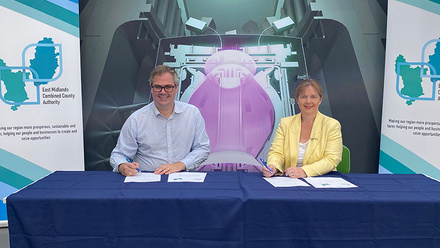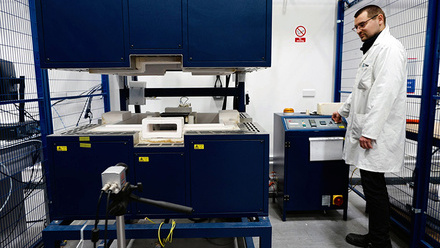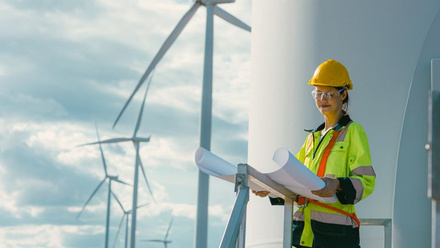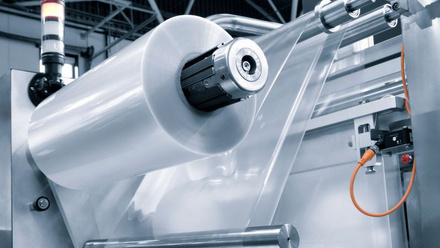Aggregated transition
The energy transition might be even more complex than the Industrial Revolution

The global energy transition is the biggest step-change since the Industrial Revolution. A linear transition is not going to happen as it did before.
The first Industrial Revolution lasted from the mid-18th Century to about 1830 and was mostly confined to Britain.
Its successor started in the mid-19th Century and ended in the early 20th century. The energy transition, however, requires several huge step-changes to happen at once and has a unique set of complications.
A complex world economy has grown up on the back of a stable energy industry. Our entire way of life depends on energy of the right sort and the right quality on a 24-hour, seven-days-per-week basis.
Energy systems are critical for powering factories and industries, for transportation, communication and virtually every aspect of modern life. Changing energy sources or infrastructure requires a myriad of interconnected systems. Nowhere is this more expected than the electrical power grid.
We also need more generation to meet an expected huge rise in demand. More electric vehicles will hit the road, the roll-out of heat pumps continues, and the use of data centres to store vast quantities of information and facilitate artificial intelligence innovation will demand large amounts of power.
Even conservative estimates of electricity use in the UK have peak demand rising from around 320.7TWh now to 680TWh in 2050.
Making this switch and keeping up with rising demand would be hard enough, but this is not just a case of taking out the old technologies and replacing them with the new. Following the closure of Uniper’s Ratcliffe-on-Soar power station near Nottingham, coal power has been eradicated from the UK energy mix. However, it was stable, easy to turn up and down, and was perfect for keeping the electricity grid running smoothly.
By contrast, the major new power source of offshore wind is intermittent, hard to control and unstable. This one change requires a whole range of other changes to store energy and stabilise the grid, ensuring we can still flip the switch day or night.
The global nature of the energy industry adds another layer of complexity. The landscape is deeply influenced by global trade, geopolitics and international agreements.
Unlike the Industrial Revolution, where developments were initially localised, the energy revolution requires coordinated efforts and cooperation among nations to address thorny issues, such as climate change, energy security and access to energy resources.
As ongoing conflicts in Ukraine and the Middle East suggest, this is not an easy task. There are vast differences in social and cultural norms across the world, so gaining consensus on big ticket issues, such as energy consumption and production, is unsurprisingly fraught with difficulties. Transitioning to new energy sources or technologies requires not only technological advancements, but also changes in behaviour, lifestyle and societal structures.
This can be daunting and a reason to shy away from being proactive. Or the issue can be simplified, so that stakeholders can all agree and we can just get on with the business of rolling it out. And with new advances, there is a range of commentaries. Some champion the advantages, others give a damning indictment.
However, the truth is there are broad trends, but very few silver bullets, and a wide range of effective, albeit niche, applications.
This highlights the neeed for new ways to interact with the energy industry. There are opportunities to be found in optimising the interactions of power, heat and cooling. In the Industrial Revolution, the limitations of generating power from heat was discovered, but now we are exploring ways to use this understanding to maximise energy use, such as from combined heat and power unit systems in hotels, offices and factories, and using waste heat from data centres to heat swimming pools.
Policy pressures have made investing in energy efficiency an opportunity – by putting an end to wastage, especially when supported by data technology.
Finally, there is an incentive to change demand to match supply rather than the other way round. For example, charging electric vehicles overnight, doing the laundry on a Sunday or preheating homes before 7am. Those that move their time of energy use are compensated with cheap and sometimes even free energy.
Facing up to these complexities will require concerted efforts from various stakeholders across the world if we are to have a cleaner, well-functioning energy system by 2050.
Currently, none of these opportunities are the definitive solution, but they are all part of a wider approach and there are many more waiting to be found. These will come together to make the energy transition happen, not as a single revolution, but as a million smaller ones all happening together.







